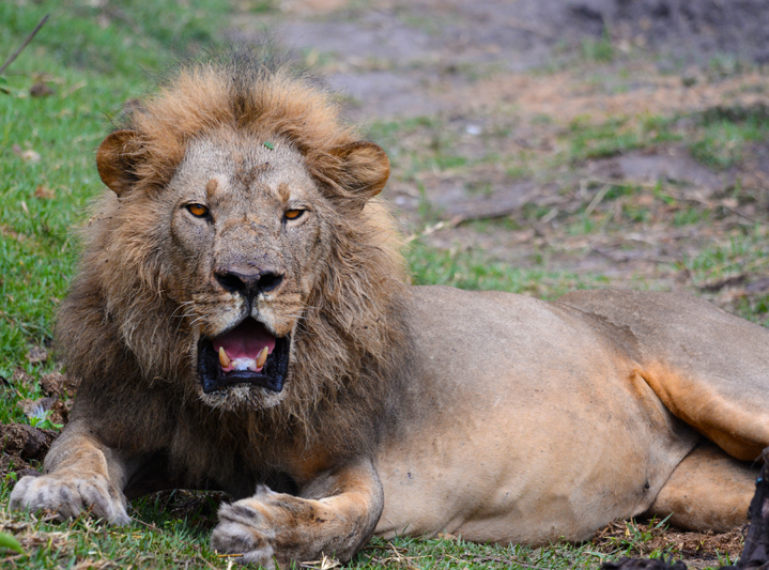
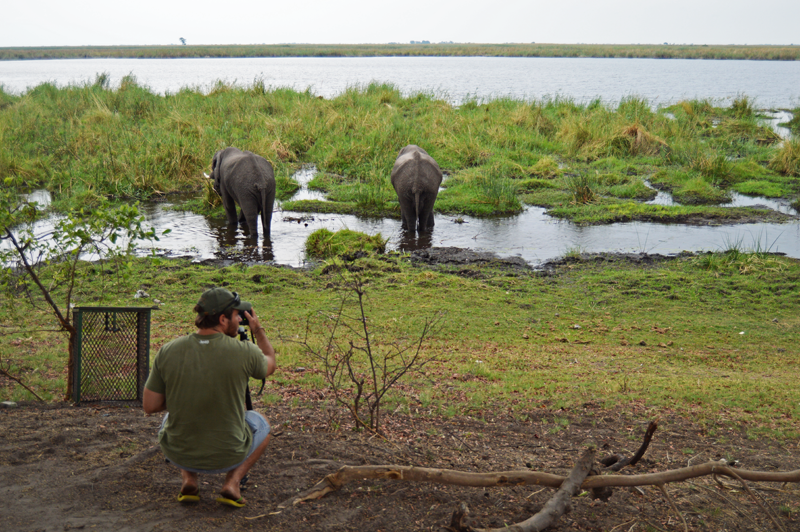
Photographer, Kevin MacLaughlin, capturing footage of the elephants as they moved through our campsite at Camp Linyanti.
One muggy afternoon on the Linyanti swamps we set off for a routine game drive. We were spending 2 weeks making our way through some of the best wildlife zones in Botswana, and game drives had become something of a marvelous habit. Guests at Camp Linyanti are led by their guides in kitted out Land Cruisers, while their accommodation in permanent tented suites looks right out over the Linyanti swamps to the Caprivi Strip on Botswana’s northern border.
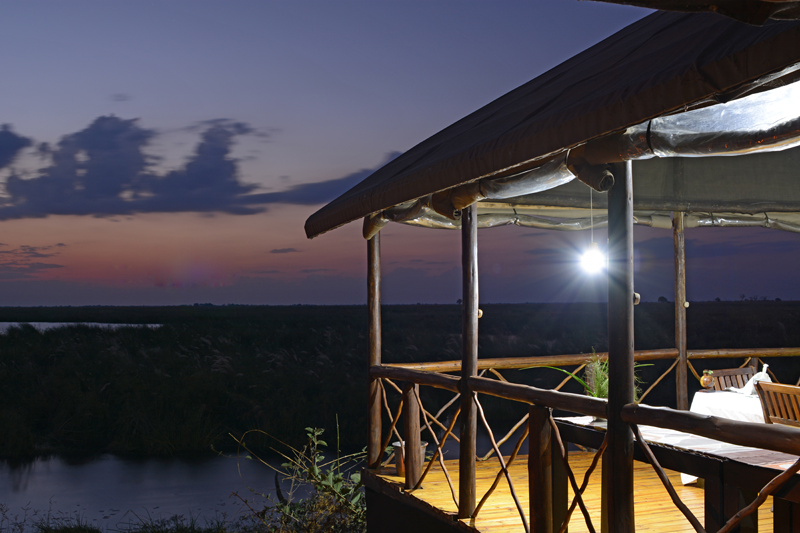
Settling in at Camp Linyanti for the night. The deck that overlooks the swamps all the way to the Caprivi Strip. Image by Kevin MacLaughlin.
As the Sun Destinations media team, photographer Kevin MacLaughlin, and I stayed at the neighbouring campsite for a more rustic experience and for ease of access into the bush. This particular evening we had no tip-offs from passing motorists or safari guides in-the-know, so we headed out to see what we could find by chance. It didn’t take us long after leaving our spot at Camp Linyanti to come across elephants (it actually didn’t take us any time at all – the elephants were in our campsite). Once we had edged our way through the browsing herd we regained an unobstructed view of the treetops, and we saw they were sagging under the weight of vultures and marabou storks.
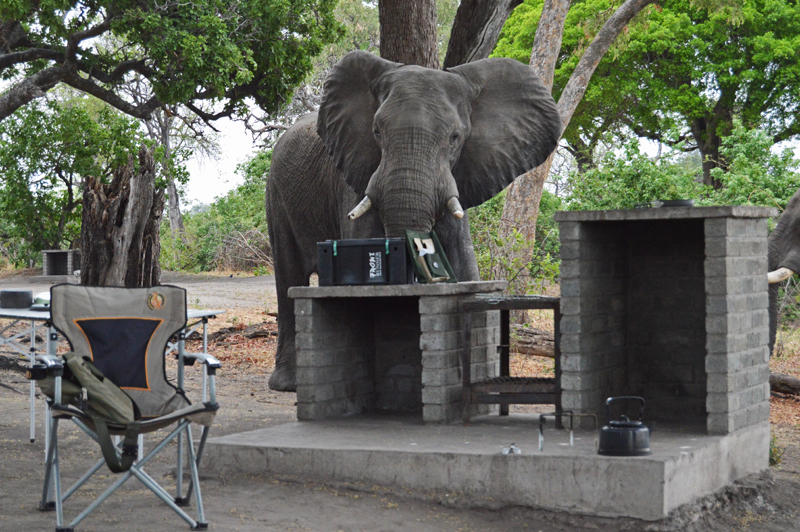
An elephant visitor at our campsite at Camp Linyanti. Out of frame are another 5 bulls that we had watched move through our camp and towards the water.
Bush Signs 101 would tell you that where there are scavengers, there is prey. And where there is prey, there are predators. Our eyes lit up and our hearts swelled with anticipation at the idea of what predatory activity lay ahead. The Linyanti is an undiscovered and almost secretive part of the well-established Chobe National Park, so when we stumbled across one of the most magnificent lion sightings I’d ever seen, I felt well and truly in tune with the wild.
Our eyes fell from the scavenger-filled trees and landed upon the ground where a big, grubby male lion lay panting, directing an unwavering glare at our approaching vehicle. Just beside him was the maggot-filled cavity of a buffalo, buzzing with flies, and looking rather close to explosion. Much of the animal remained intact, however it was swollen to twice its size, and I entertained quite a genuine fear of it popping under pressure.
What a resplendent vision this was of Africa’s apex predator in a private part of Botswana’s most popular park, settled on the banks of a bird-laden swamp, and we had found him in ‘the golden hour’. To our utter delight, we saw on the right of us a second male lion, also panting lazily on the edge of the water. Trying to position ourselves upwind of the carcass and in the correct light for photographs of both lions was challenging, and in the end we suffered a bit for the cause. (Note to self: nose pegs are necessary safari items).
As we sat (mouth-breathing) in between 2 massive, golden-maned male lions, we were surrounded by a variety of vultures and marabou storks, lurking at a safe distance and waiting for their chance at the buffalo carcass. Some white-backed vultures stood in hunched groups, while others were comfortable enough to lie down; hooded vultures with their pink and white faces perched on shady tree branches watching the lions’ movements carefully. Eventually, as the lion got up for a drink at the river, the birds moved in for a brief bite. We were so intrigued with the scene we had found ourselves in the middle of that it took us a while to notice that the elephants in the middle of the swamps were moving closer…
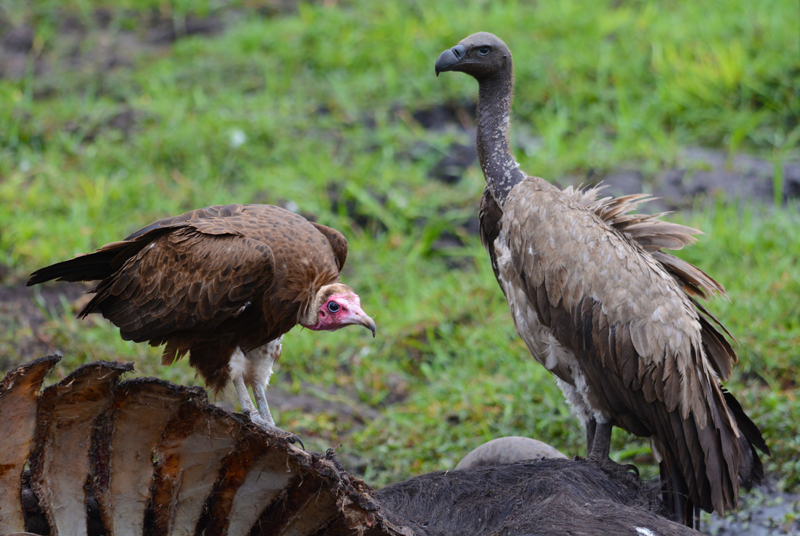
A hooded vulture bows slightly to the bigger white-backed vulture on the back of the buffalo kill. Image by Kevin MacLaughlin.
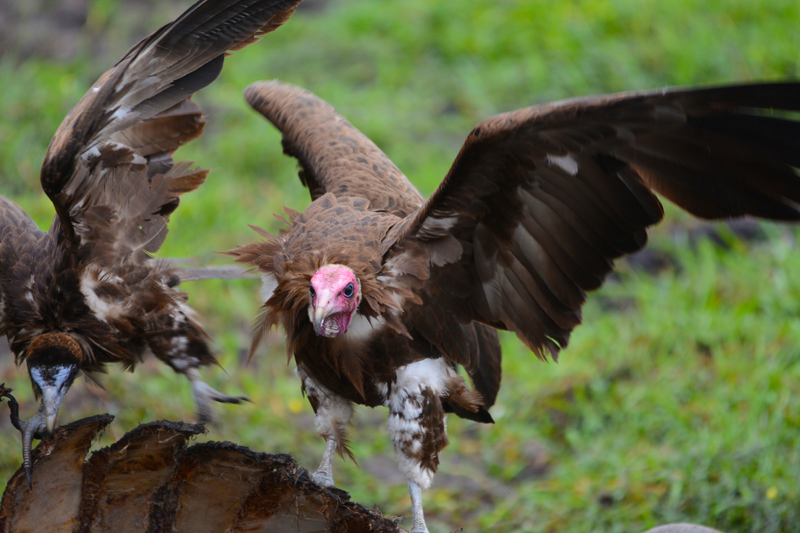
Hooded vultures claim their spot on the buffalo carcass as soon as its guardian has gone to drink. Image by Kevin MacLaughlin.
A loud, angry, trumpeting shriek came calling across the Linyanti, and the wildly flapping ears of 2 elephants grew bigger very quickly. They had spotted the lions, and they were not having them on their swampland. We watched the elephants determinedly make their way through the water (not without an amusing tumble into an unexpectedly deep pool) and emerge on our bank with every intention to chase the lions away. One remained, guarding the buffalo carcass, as the elephants focused on the brother they were closest too.
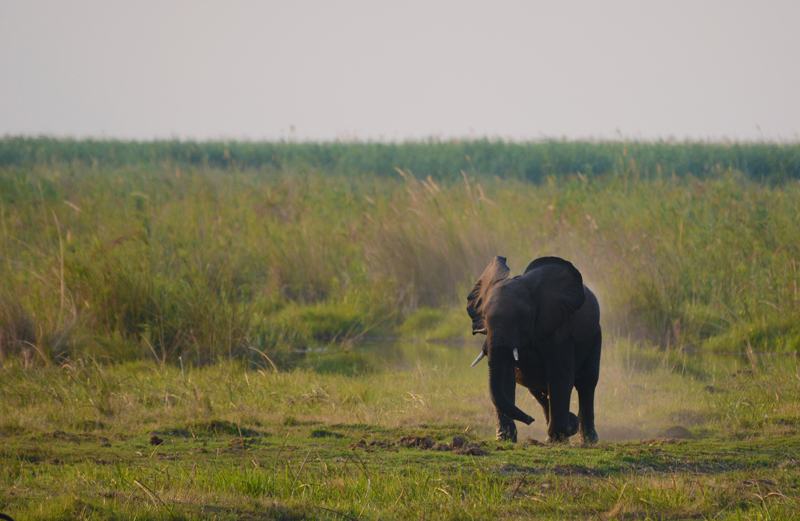
From across the Linyanti swamps, a pair of elephants comes running towards the lions. Image by Kevin MacLaughlin.

An elephant charges across the Linyanti swamps in the direction of the 2 male lions. Image by Kevin MacLaughlin.
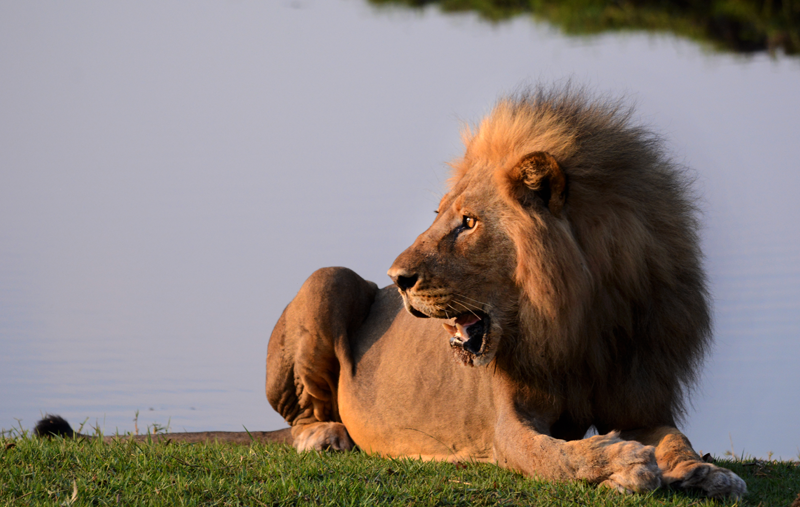
Looking towards the danger as elephants come hurtling across the swamps towards them. Image by Kevin MacLaughlin.
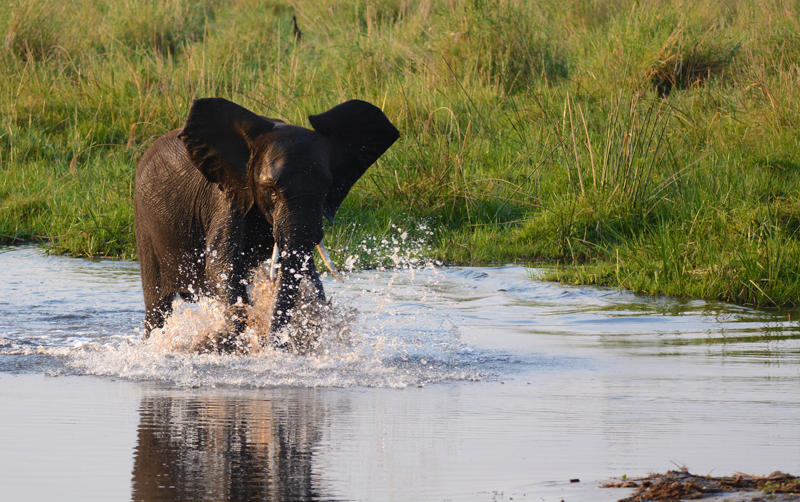
Reaching the water, the elephant gets right in and crosses to get to the lion. Image by Kevin MacLaughlin.
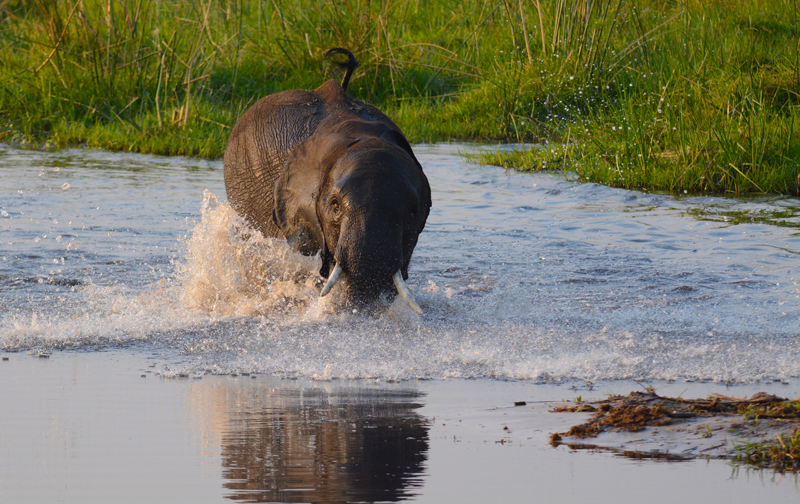
The charging elephant hits a pothole and plunges into the water at full speed. Image by Kevin MacLaughlin.
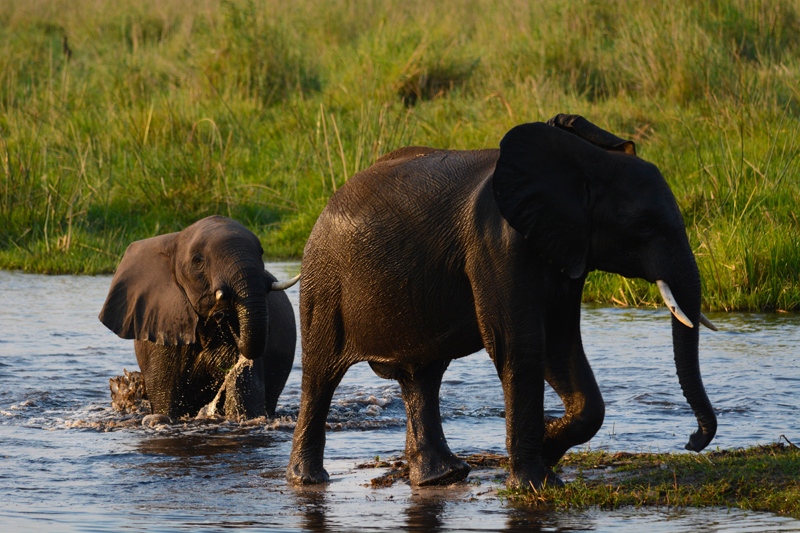
The elephants arrive on our bank and one of the lions begrudgingly gets out of the way. Image by Kevin MacLaughlin.
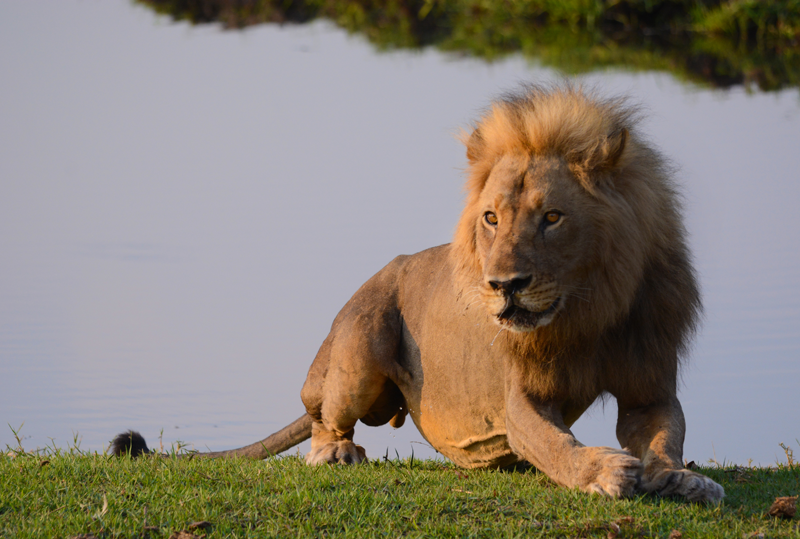
Better get going! The lion finally decides its safest to move once the elephants make their approach. Image by Kevin MacLaughlin.
What an unbeatable performance of nature to be able to witness so exclusively. We knew the lions would still be there for the next couple of days – as they very rarely leave their meal for the ever-so-desperate vultures, hyenas and jackals. After a quick sundowner and some time for contemplation over the extensive marshland of the Linyanti, we made our way back to camp where a fire provided light that was fairly unnecessary under the bright light of an almost-full moon.

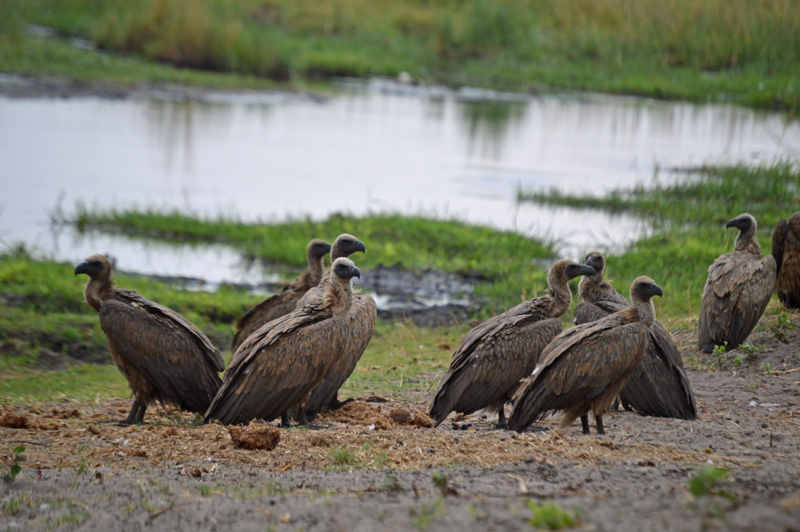

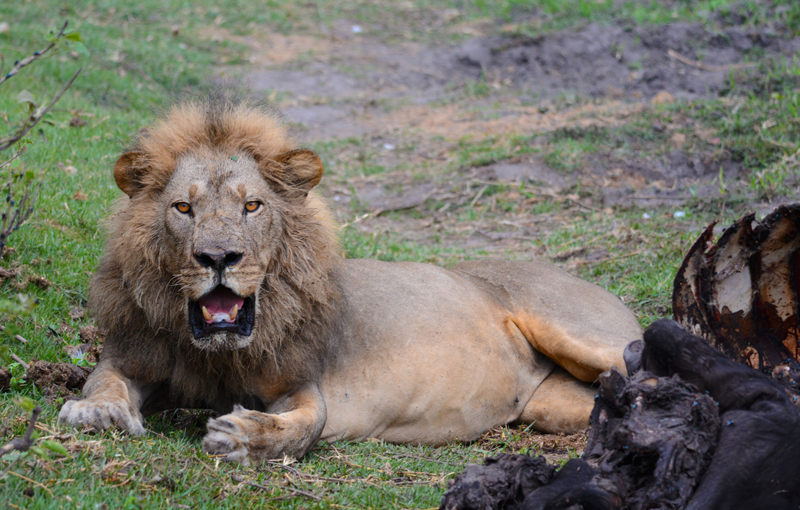
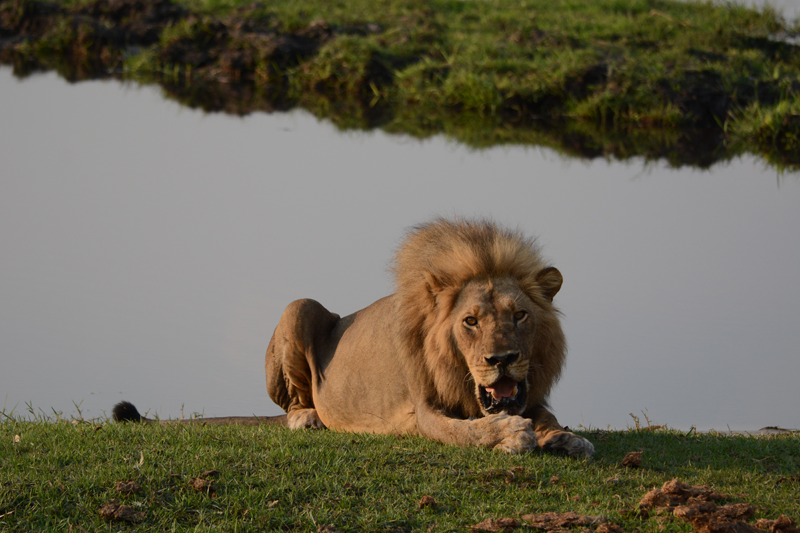
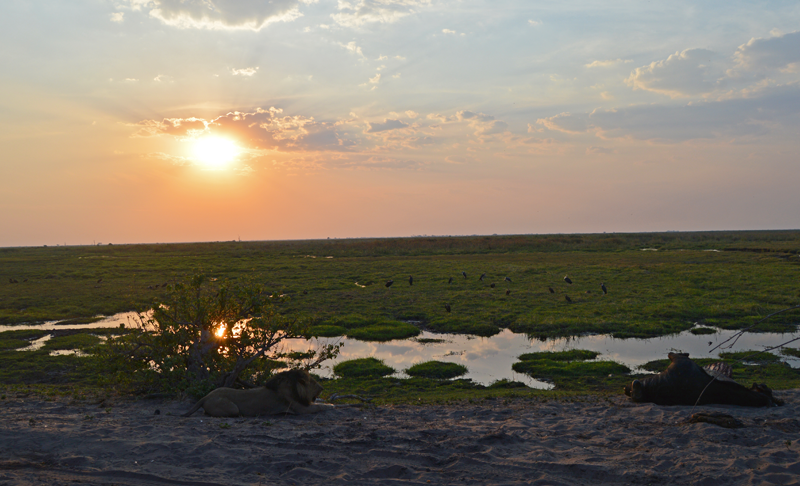
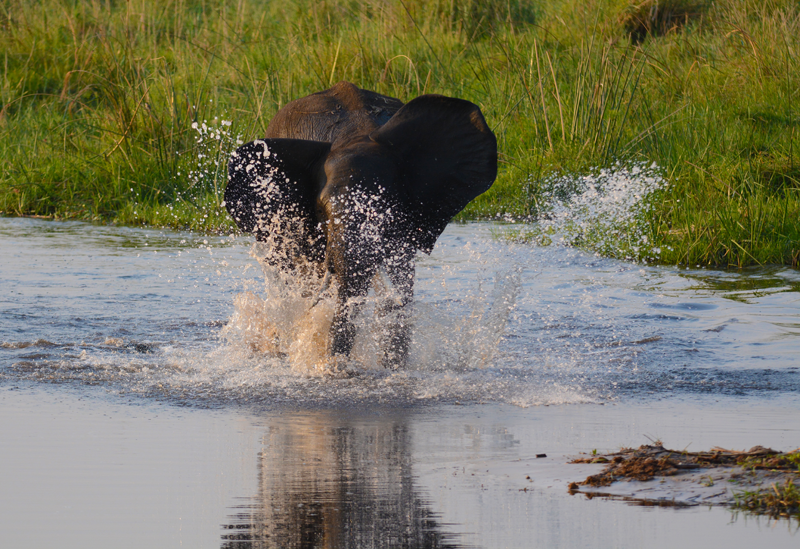
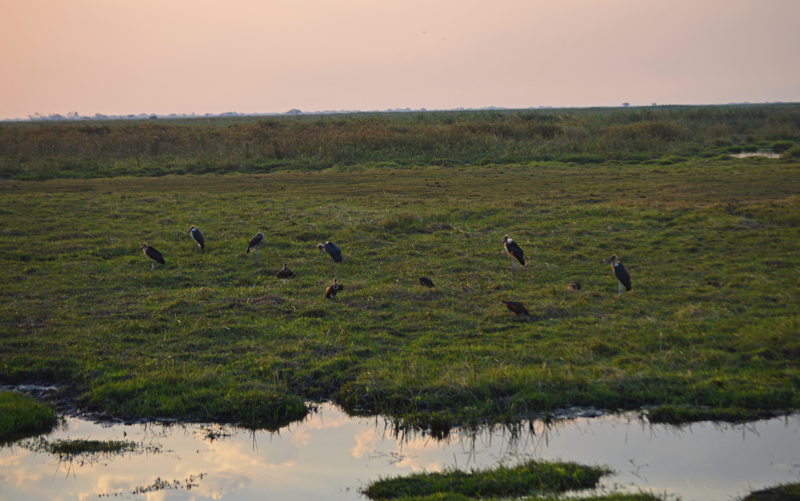
Dining with an African rock python in Botswana - Getaway Magazine